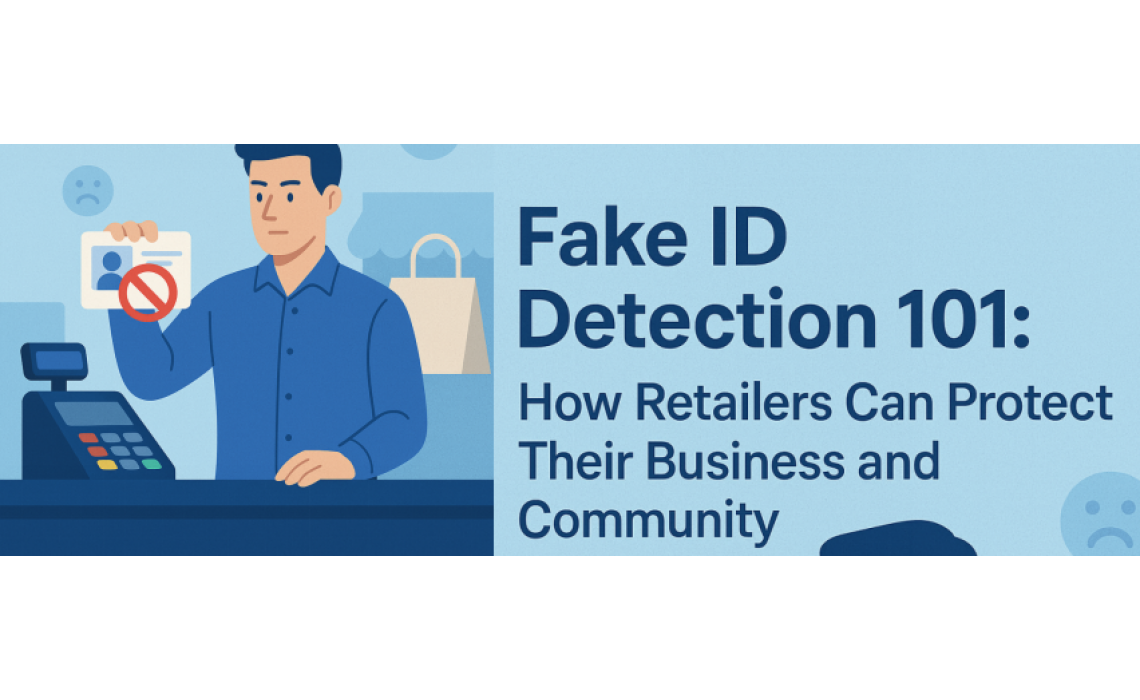Fake ID Detection 101: How Retailers Can Protect Their Business and Community
Fake ID Detection 101: How Retailers Can Protect Their Business and Community
Overview
For retailers selling age-restricted products like alcohol, tobacco, or cannabis, spotting fake IDs isn’t just about compliance—it’s about safeguarding your business, your community, and your reputation. With counterfeit IDs becoming more sophisticated, staff training and awareness are critical. This guide breaks down practical strategies to help your team identify fraudulent IDs and stay ahead of scammers.
1. Why Fake ID Detection Matters
●Legal Risks: Selling to minors can result in fines (up to $15,000+ per violation), license revocation, or even criminal charges.
●Reputational Damage: A single violation can harm customer trust and attract negative media attention.
●Public Safety: Underage access to alcohol, vaping, or cannabis contributes to addiction, accidents, and long-term health issues.
Stat: The FDA reports that 15% of underage buyers successfully purchase tobacco products using fake IDs.
2. Key Security Features of Legitimate IDs
Train your team to inspect these elements on state-issued IDs:
A. Physical Features
1.Holograms and Overlays: Tilt the ID to see shifting images (e.g., state seals, holographic maps).
2.UV Elements: Use a UV light to check for hidden patterns, text, or state symbols.
3.Microprinting: Tiny text (e.g., "DMV" or state mottos) that appears blurred when photocopied.
4.Laser Perforations: Small holes forming a shape (visible when held to light).
B. Digital Features
1.Barcodes/Magnetic Stripes: Scan to verify data matches the ID’s visible details.
2.QR Codes: Many newer IDs link to encrypted state databases via QR.
Pro Tip: Keep a state ID guidebook or app (e.g., ID Checking Guide) at registers for quick reference.
3. Red Flags to Watch For
Teach staff to spot these common signs of fake IDs:
●Physical Inconsistencies:
○Peeling laminate, misspelled words, or incorrect fonts.
○Photos that look altered (e.g., uneven lighting, mismatched headshots).
○Edges that feel too thick, too thin, or uneven.
●Data Discrepancies:
○Birthdates that don’t align with the holder’s appearance (e.g., a 20-year-old claiming to be 25).
○Zip codes or addresses that don’t match the state issuing the ID.
●Behavioral Cues:
○Nervousness, reluctance to make eye contact, or rushing the transaction.
○Groups of young adults loitering nearby (a tactic to distract staff).
Case Study: A liquor store in Texas reduced fake ID incidents by 70% after training staff to cross-check barcodes with visible birthdates.
4. Tools and Tech to Enhance Detection
Invest in affordable tools to support your team:
●UV Lights: Reveal hidden security features (10–20).
●ID Scanners: Devices like Bar & Club Stats or AgeChecker Pro instantly validate IDs and flag fakes.
●Mobile Apps: Apps like ScannFake analyze IDs using smartphone cameras and AI.
●Digital Training Modules: Platforms like ServSafe Alcohol offer certification courses in ID verification.
5. Step-by-Step Verification Process
Implement a standardized protocol for staff:
1.Ask for the ID: Require identification from everyone who looks under 30.
2.Inspect Physically: Check holograms, edges, and photos under good lighting.
3.Scan the ID: Use a scanner to validate the barcode or magnetic stripe.
4.Ask Questions: Confirm details like zodiac sign, birth year, or address.
5.Refuse Politely: If in doubt, say, “I’m sorry, I can’t accept this ID. Have a good day!”
Script Example:
“I just need to verify your ID—thanks for understanding! Could you confirm your birth year for me?”
6. Legal Do’s and Don’ts
●Do:
○Confiscate suspected fake IDs (if state law allows) and report them to local police.
○Post “We Card” signage to deter underage attempts.
●Don’t:
○Confront aggressively or accuse the holder—stay calm and professional.
○Share details about security features publicly (e.g., on social media).
7. Training and Culture
●Monthly Workshops: Role-play scenarios and review updated ID designs.
●Reward Vigilance: Offer bonuses or recognition for staff who catch fakes.
●Stay Updated: Follow your state’s DMV site for ID redesign announcements (e.g., the 2023 California REAL ID update).
8. The Bigger Picture
By stopping fake IDs, retailers:
●Protect minors from health risks.
●Strengthen community trust.
●Avoid funding criminal networks (counterfeit ID rings often fund larger crimes).
Wrap up: Vigilance is a Competitive Advantage
In an era where fake IDs are easier to buy online but harder to spot, educated retailers gain an edge. By combining staff training, technology, and a commitment to compliance, your business can lead the fight against underage sales—and build a reputation as a responsible community partner.
Final Tip: Download our free “Fake ID Detection Checklist” [https://www.idpapa.org] to keep at your register!


